Cameron Alberg
Adjustable Dog Brace
The adjustable dog brace can prevent muscle atrophy by allowing variable levels of tightness and support,and can be re-adjusted at any time. The brace was created as part of an interdisciplinary product design class.
Cameron Alberg, George Couston, Joey Lund
My Role: Generated concepts, developed design, created CAD models, tested and refined prototypes
Skills: Surface Modeling | Finite-Element Analysis | Ergonomic Design | Rapid Prototyping

360° view of final CAD model (Fusion 360)
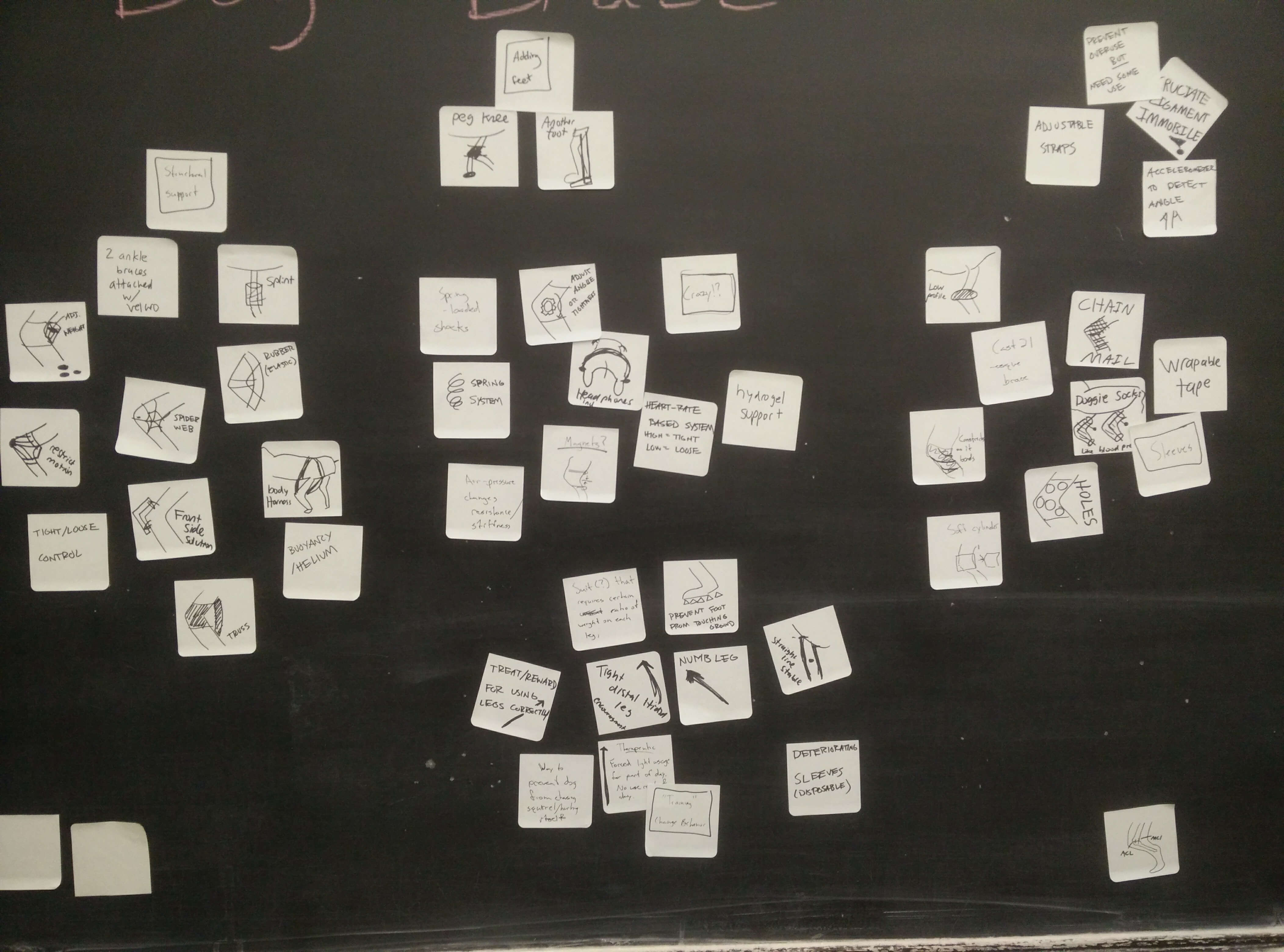
Initial brainstorming session
Why
How can we design a brace that provides rigidity while remaining flexible enough to prevent muscle atrophy?
A tear of the Cranial Cruciate Ligament (CCL) can severly impair a dog's ability to move. While surgery is the preferred option, older dogs usually cannot undergo operations. In this case, a brace is recommended to immonilize the torn ligament. However, current braces are either too expensive or ineffective.

Concept sketches
Process
After brainstorming everything and anything we could think of (such as an inflatable brace that worked similarly to a blood pressure cuff), we refined our ideas to a few concepts that we sketched out in more detail. We met with a veterinarian to better understand the problem, and showed her our initial concepts. Together we concluded that an adjustable brace would be the most effective.
The brace was sculpted in Fusion 360 using an existing 3D model of a medium-sized dog, then printed and tested on an actual dog throughout the process. We incorporated an existing ratchet mechanism to provide the adjustability feature, but moved to a dual ratchet system to improve usability. By tightening each ratchet (connected to a rope around the brace), a dog owner can fine-tune the fit of the brace and loosen it when their dog becomes uncomfortable or needs to exercise their leg.
To reduce the weight and improve breathability of our design, we removed material in non-essential areas of the brace. These locations were determined by conducting stress tests on our initial design, and removing material where low stress concentrations appeared. Grooves were added to the back piece to prevent the rope from getting snagged, as well as decreasing the overall size of the brace.
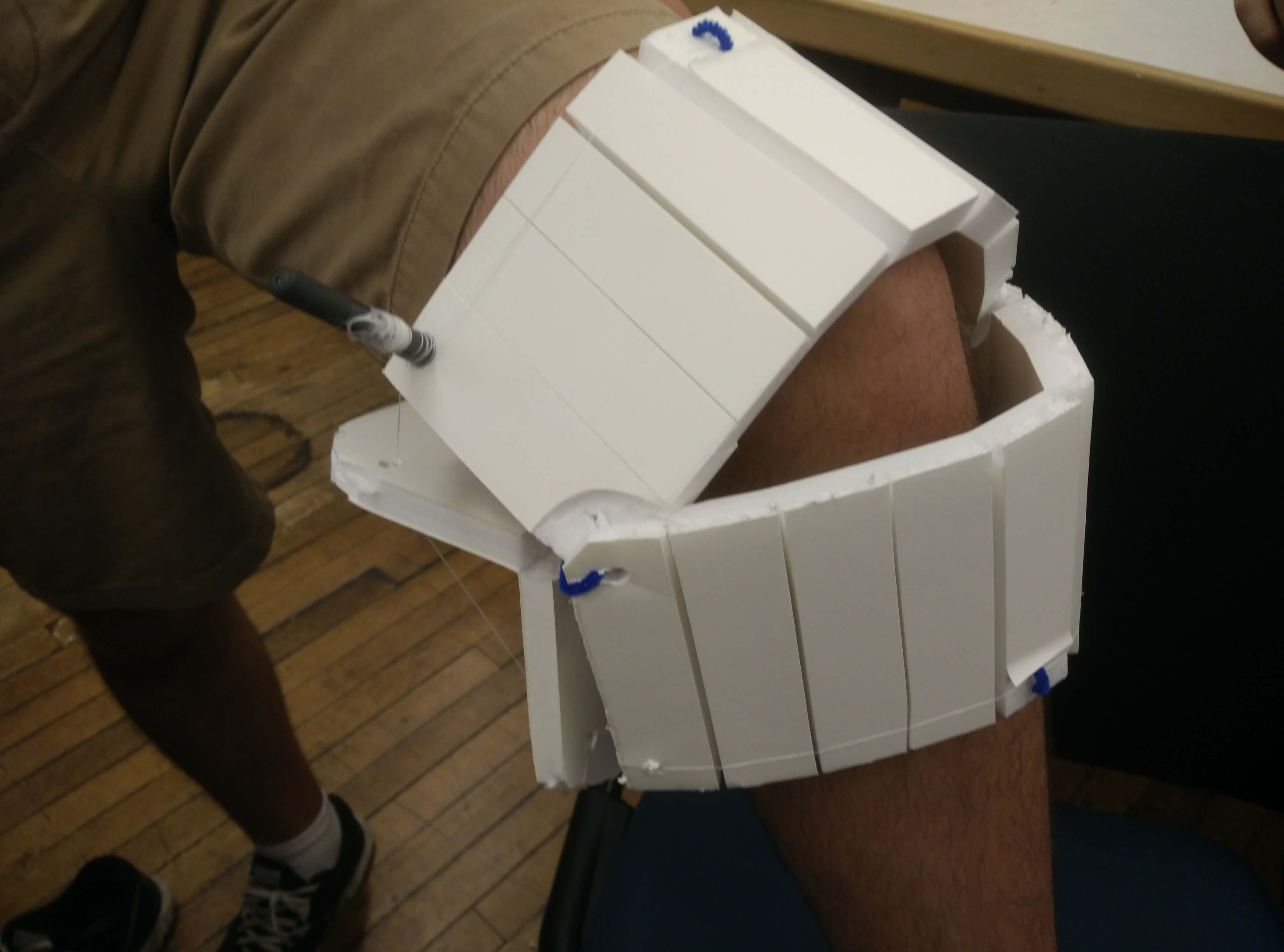
Rough prototype of design function

Testing 3D printed prototype on an actual dog
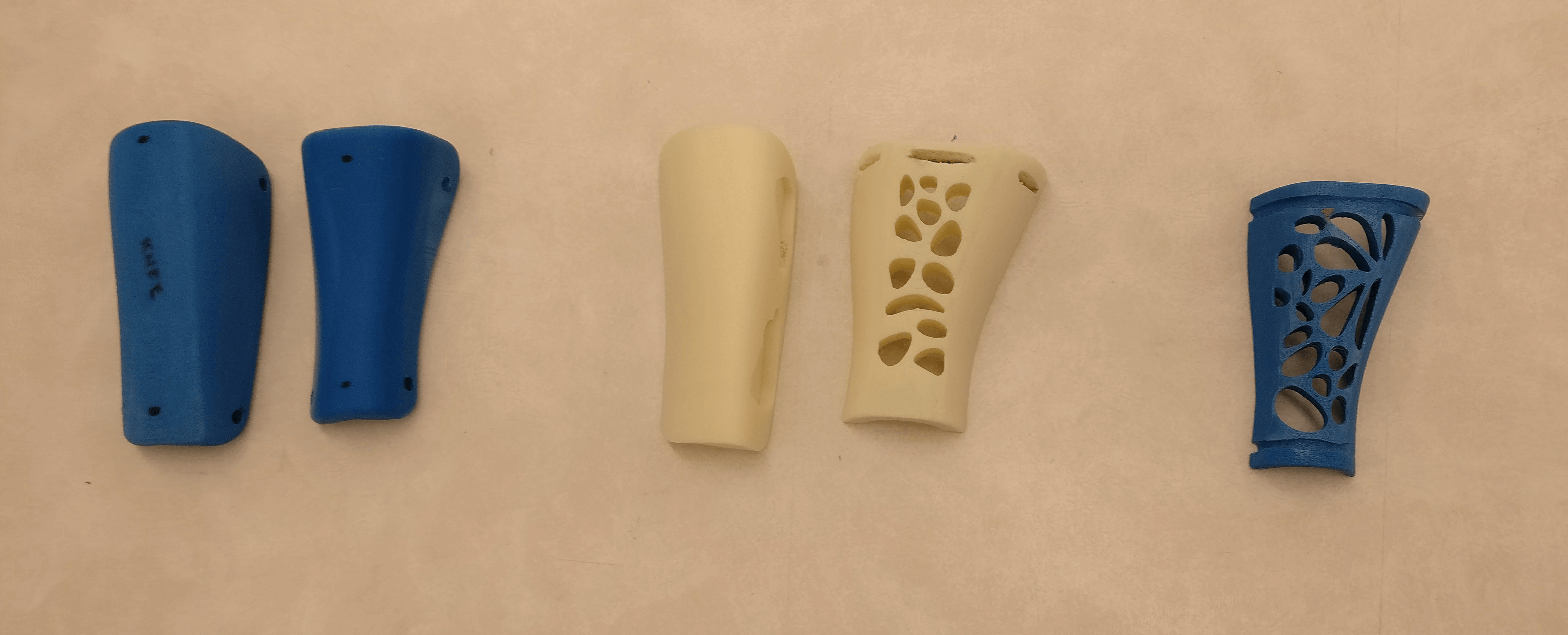
Prototypes experimenting with thickness and hole placement
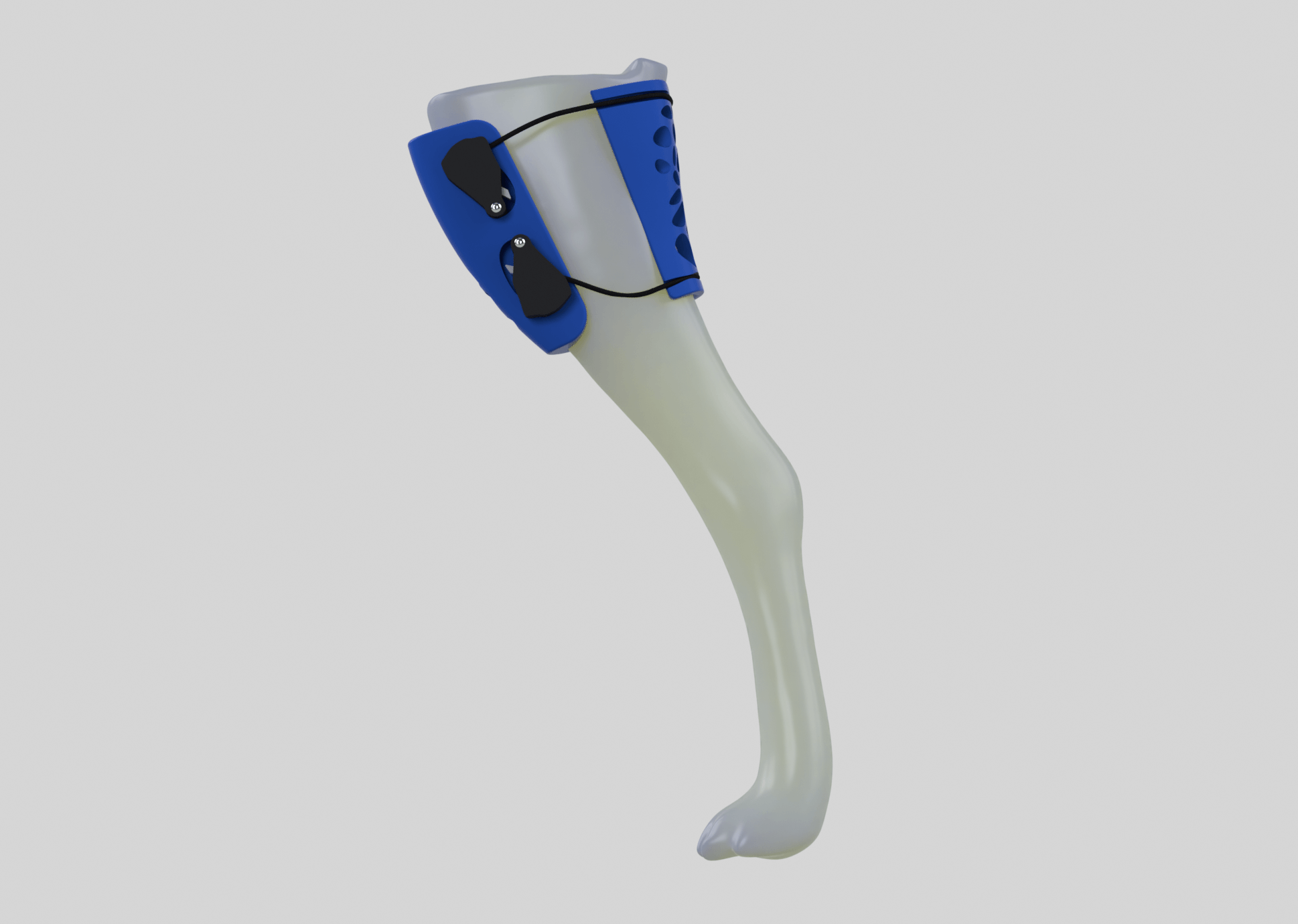
CAD model on dog leg (Fusion 360)
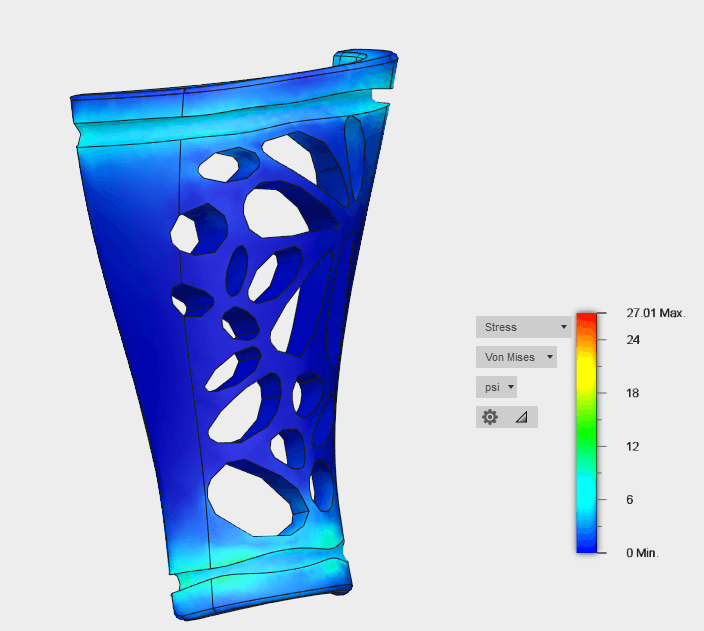
Finite-element stress analysis on back piece (Fusion 360)
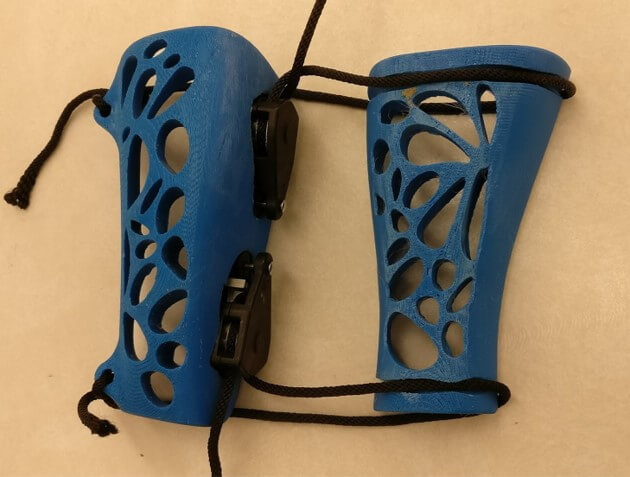
Final prototype
Solution
An adjustable brace with a ratchet system that restricts rotational movement of the knee, while remaining comfortable and controllable. The tightness of the brace can be changed easily by the user to prevent muscle atrophy and relieve pressure while still supporting the affected area. This design is lightweight, breathable, and can be customized for dogs of various sizes.The final prototype costs $30 to make, compared to $600 for other braces on the market.
Future improvements could include using elastic straps instead of rope to reduce the likelihood of fraying due to biting/scratching. Padding could also be added on the insides of the brace to increase comfort.